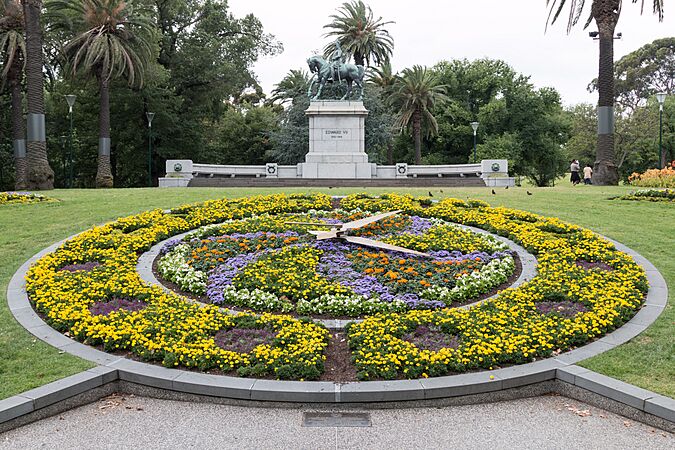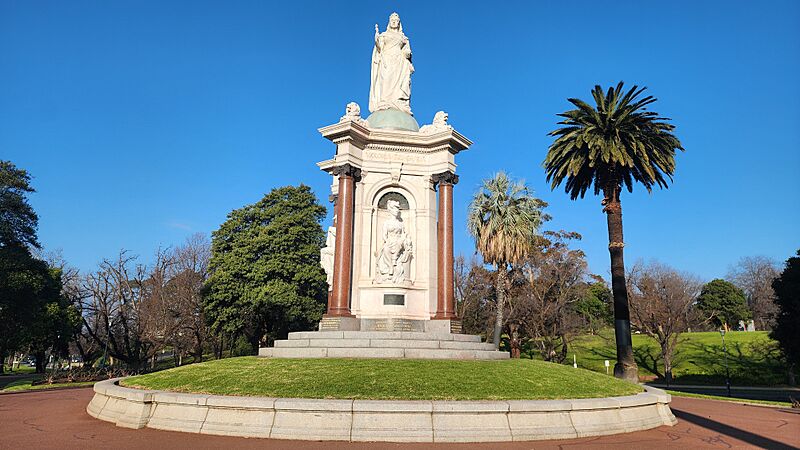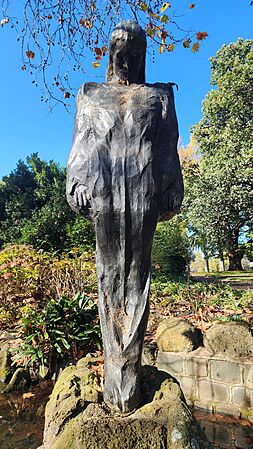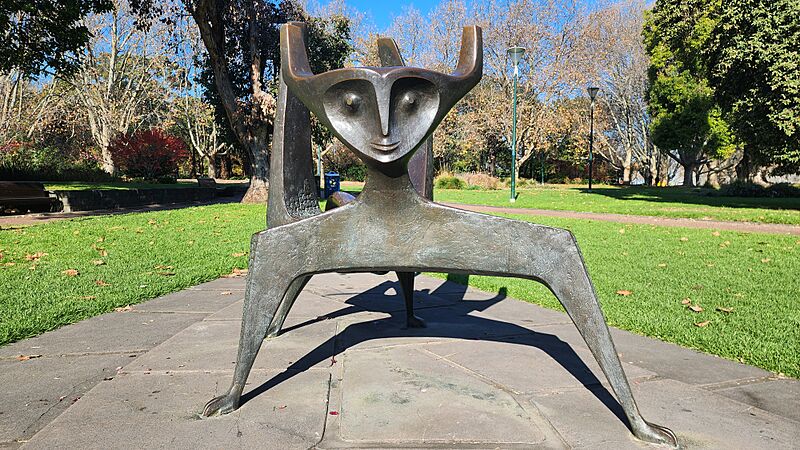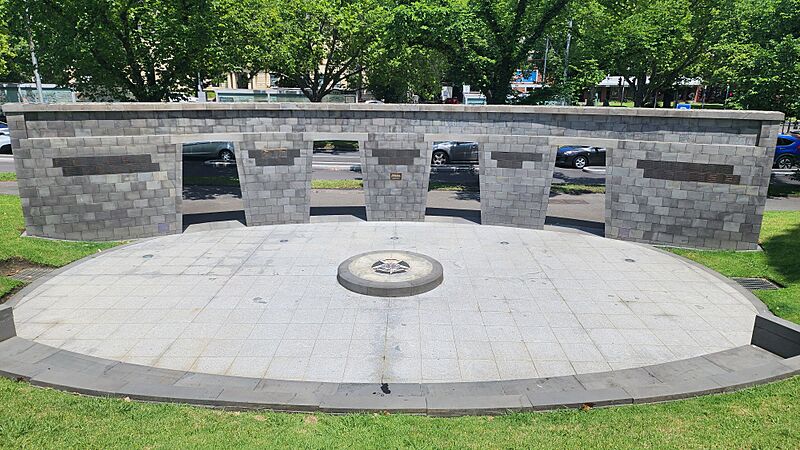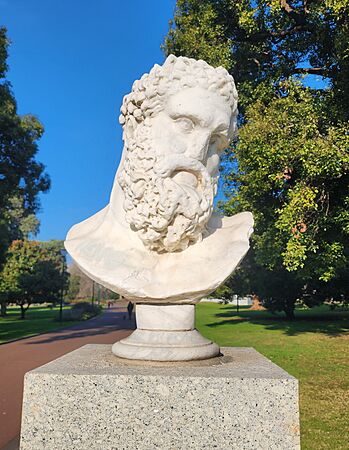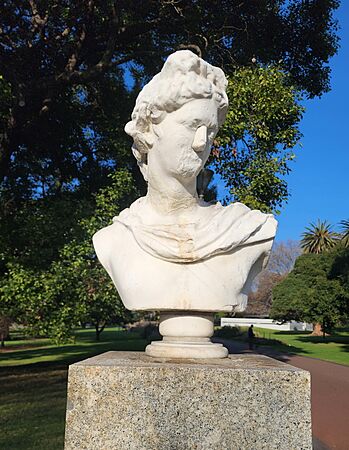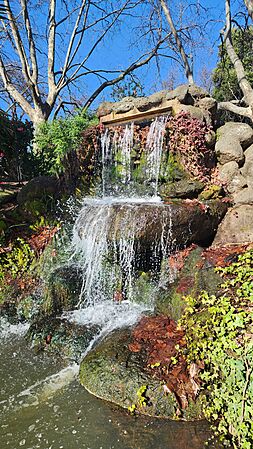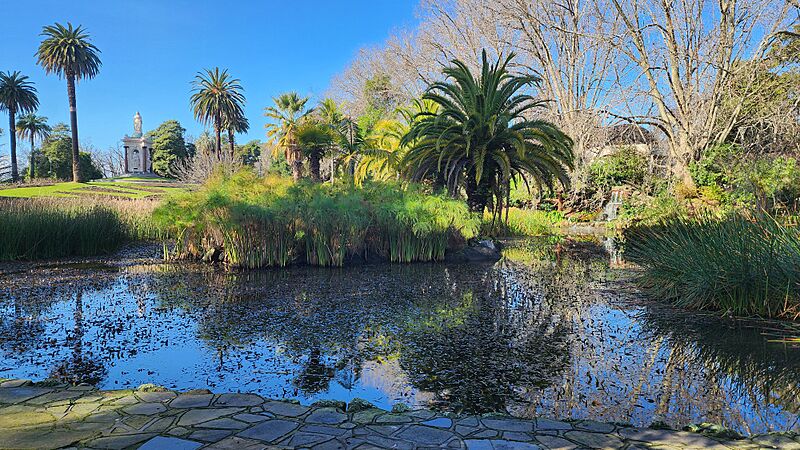Queen Victoria Gardens facts for kids
Quick facts for kids Queen Victoria Gardens |
|
|---|---|

The view from the Queen Victoria statue towards the Victorian Arts Centre
|
|
| Type | Public Park |
| Location | Melbourne, Australia |
| Status | Open |
| Paths | Sealed |
| Terrain | Flat, Riverbank |
| Water | Ponds |
| Vegetation | Australian Native, Lawns, Non-native traditional gardens |
| Connecting transport | Tram, Bus, Car |
| Landmarks | Floral Clock |
| Facilities | Toilets, Seating |
The Queen Victoria Gardens are a special park in Melbourne, Australia. They were created to remember Queen Victoria, who was a very important queen. The gardens cover about 4.8 hectares (that's like 12 football fields!). You can find them across from the Victorian Arts Centre and the National Gallery of Victoria.
Queen Victoria became queen in 1837, just two years after Europeans first settled in Melbourne. She ruled for a very long time. When she passed away in 1901, people wanted a lasting way to honor her. So, they decided to build these beautiful gardens and a statue of her. The statue shows the Queen in fancy clothes, looking out over pretty lakes, green lawns, and rose gardens. From there, you can see the Melbourne Arts Centre Spire and tall city buildings.
The Queen Victoria Gardens are part of a bigger area called the Domain Parklands. This large group of parks is located south-east of the city, next to the Yarra River. Other parks in this area include the Royal Botanic Gardens, Kings Domain, and Alexandra Gardens.
Contents
Exploring Queen Victoria Gardens
The Queen Victoria Gardens are full of interesting things to see and do. It's a great place to relax, explore, and learn a bit about history.
Amazing Garden Features
The park has many unique features, from a giant clock made of flowers to statues and peaceful spots.
The Giant Floral Clock
One of the most famous sights is a huge floral clock. It's located right across from the National Gallery of Victoria. This amazing clock is made up of over 7,000 flowering plants! The plants are changed twice a year, so it always looks fresh and colorful. A group of Swiss watchmakers gave this special clock to the City of Melbourne in 1966.
Royal Statues and Memorials
Behind the floral clock, you'll find a bronze statue of a person on a horse. This is a memorial to King Edward VII, who became king after Queen Victoria. The statue was created by a sculptor from Melbourne named Bertram Mackennal and was shown to the public on July 21, 1920.
At the highest point of the gardens stands the Queen Victoria Memorial. This grand memorial is made from granite and marble. It was paid for by people who donated money and was sculpted by James White. The memorial remembers five important parts of Queen Victoria's long reign. It was officially opened on May 24, 1907.
The area where the gardens are now used to have native Australian plants like she-oaks, wattles, paperbarks, and river red gums. Today, it's a beautifully designed garden with calm lakes, wide lawns, colorful flowerbeds, and many different kinds of trees and bushes.
Fun Sculptures to Discover
Besides the royal monuments, the gardens are home to many cool sculptures. You can find:
- The Genie: This is a fun sculpture for children to play on. It was made by Tom Bass in 1973.
- The Pathfinder: This bronze statue shows an Olympic hammer thrower in action. John Robinson created it in 1974.
- The Phoenix: This sculpture is made from bronze and copper. It was created by Baroness Yrsa Von Heistner in 1973 to remember a big international event.
- The Bronze Water Children: This artwork by John Robinson, made in 1973, shows children playing at the start of a stream.
- The Water Nymph: This bronze figure shows a kneeling person. It was sculpted by Paul Montford in 1925.
The Janet Lady Clarke Rotunda
A classic rotunda was built in 1913. A rotunda is a round building, often with a dome, used for events or just for shelter. This one is named after Janet, Lady Clarke. She was a kind person who helped women in Melbourne.
Gallery
See also
- MPavilion


